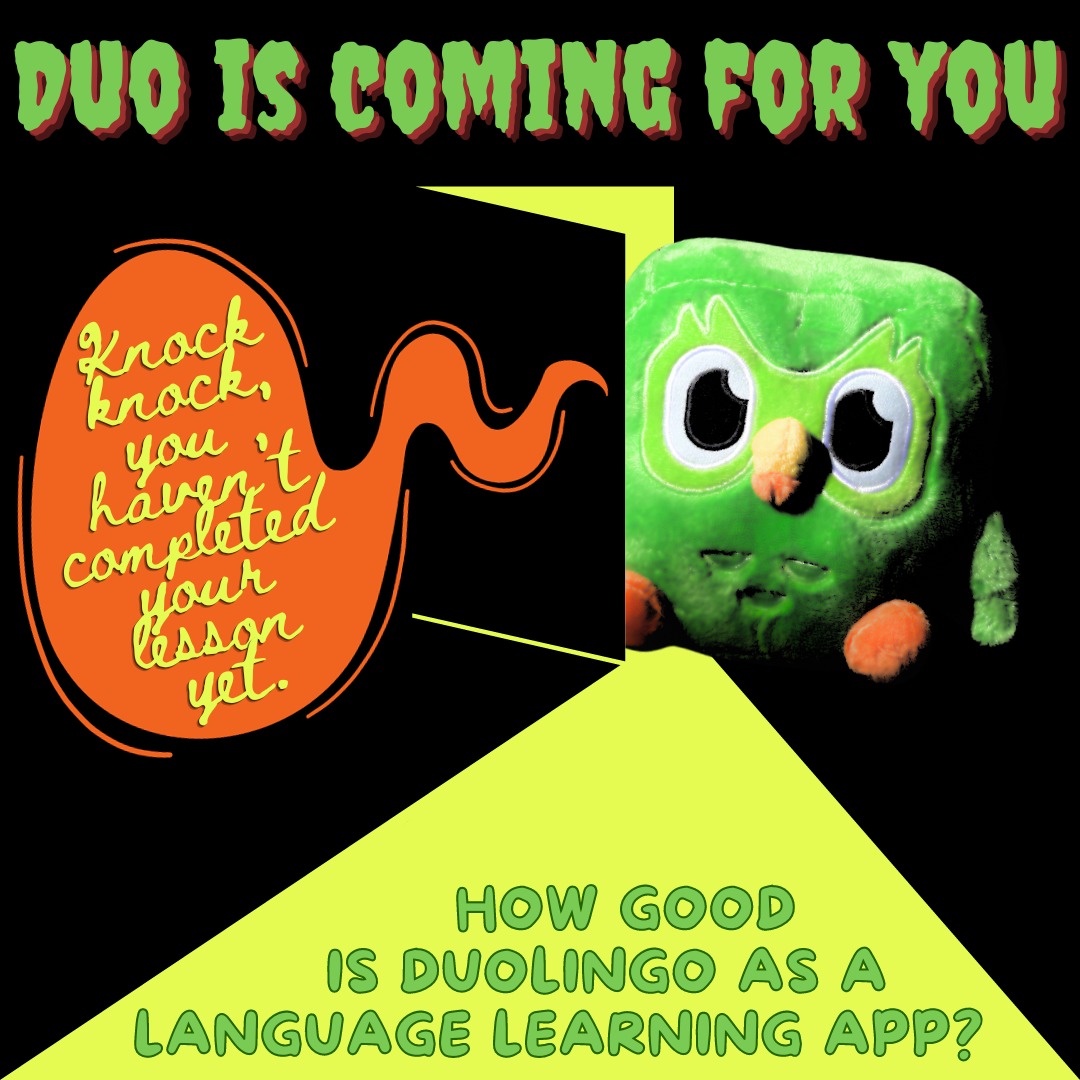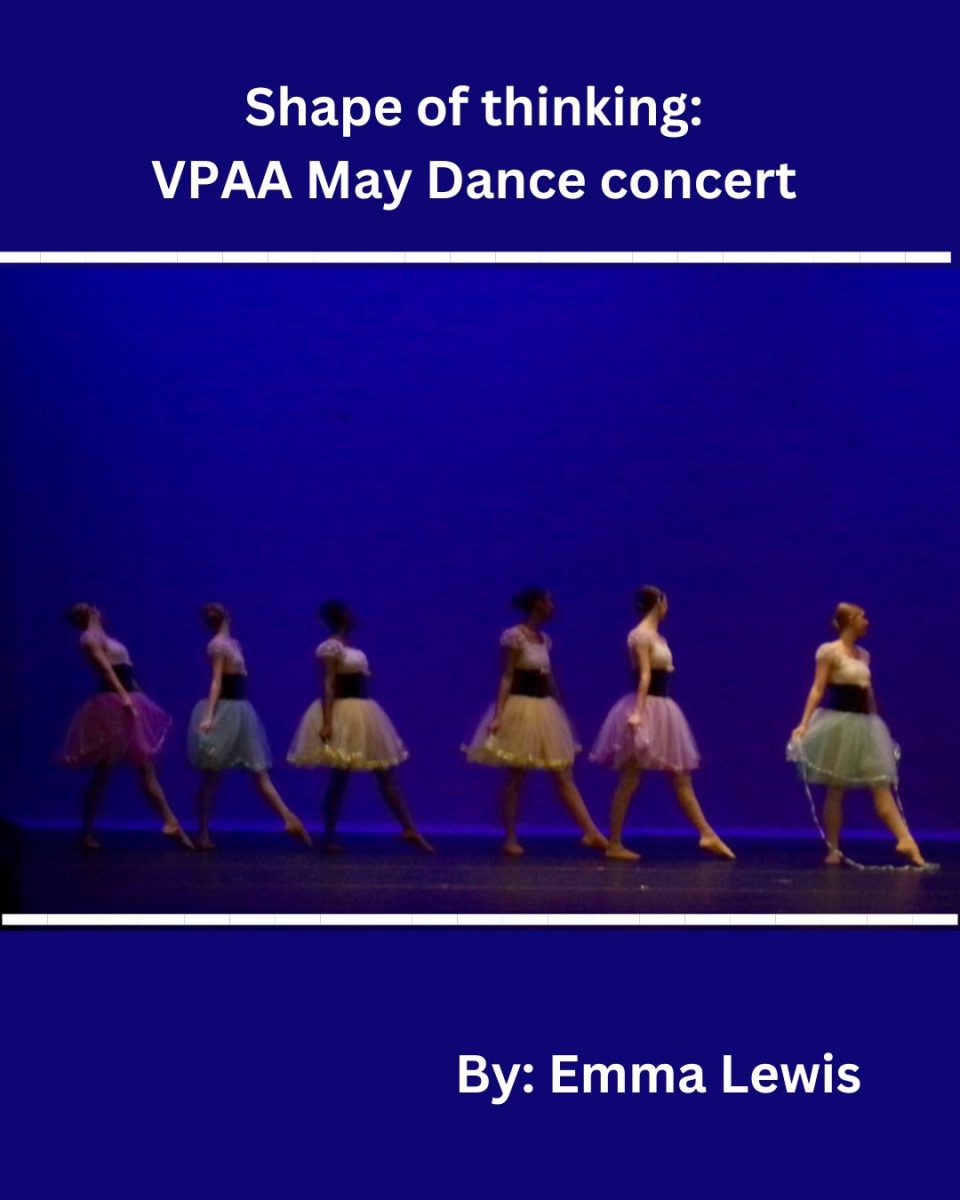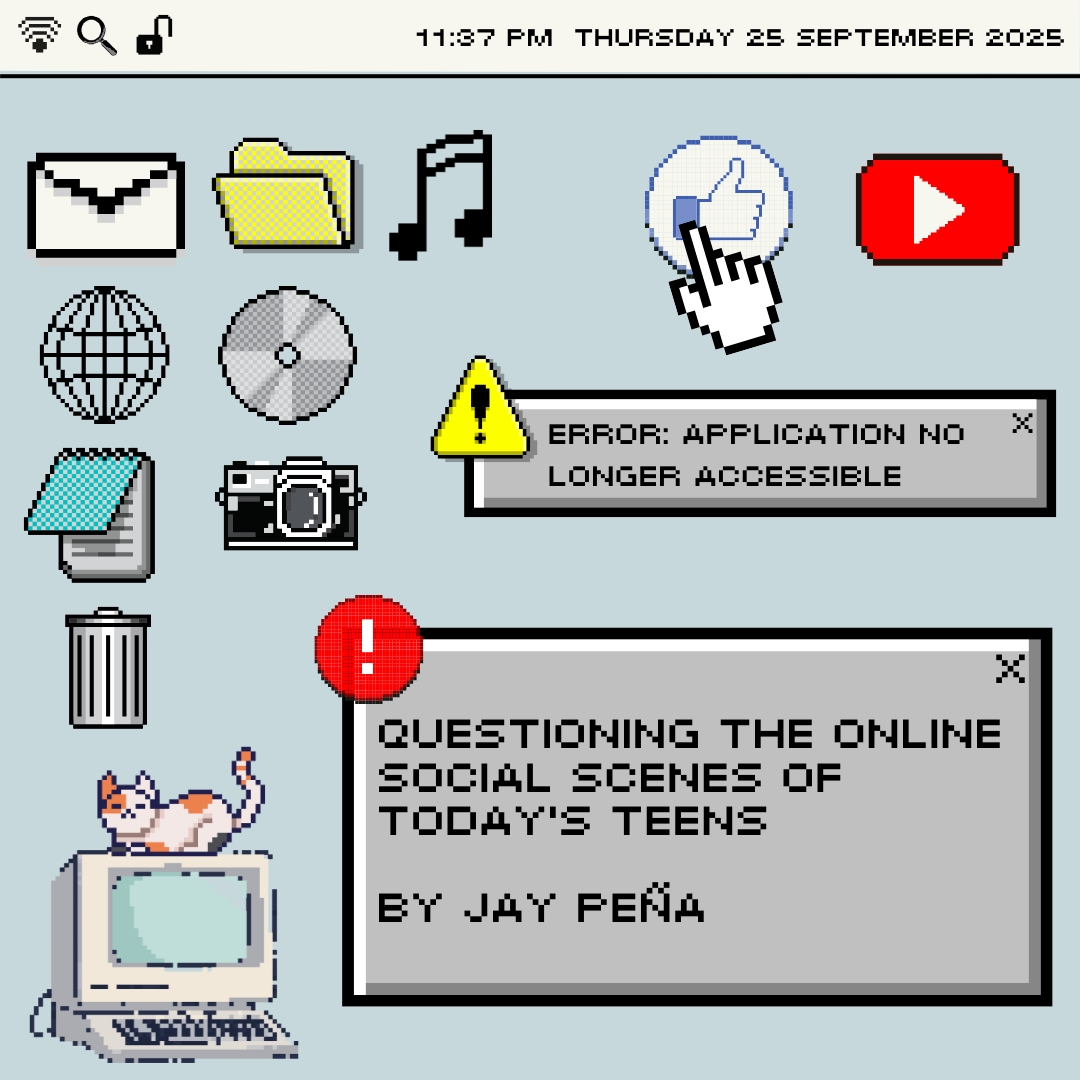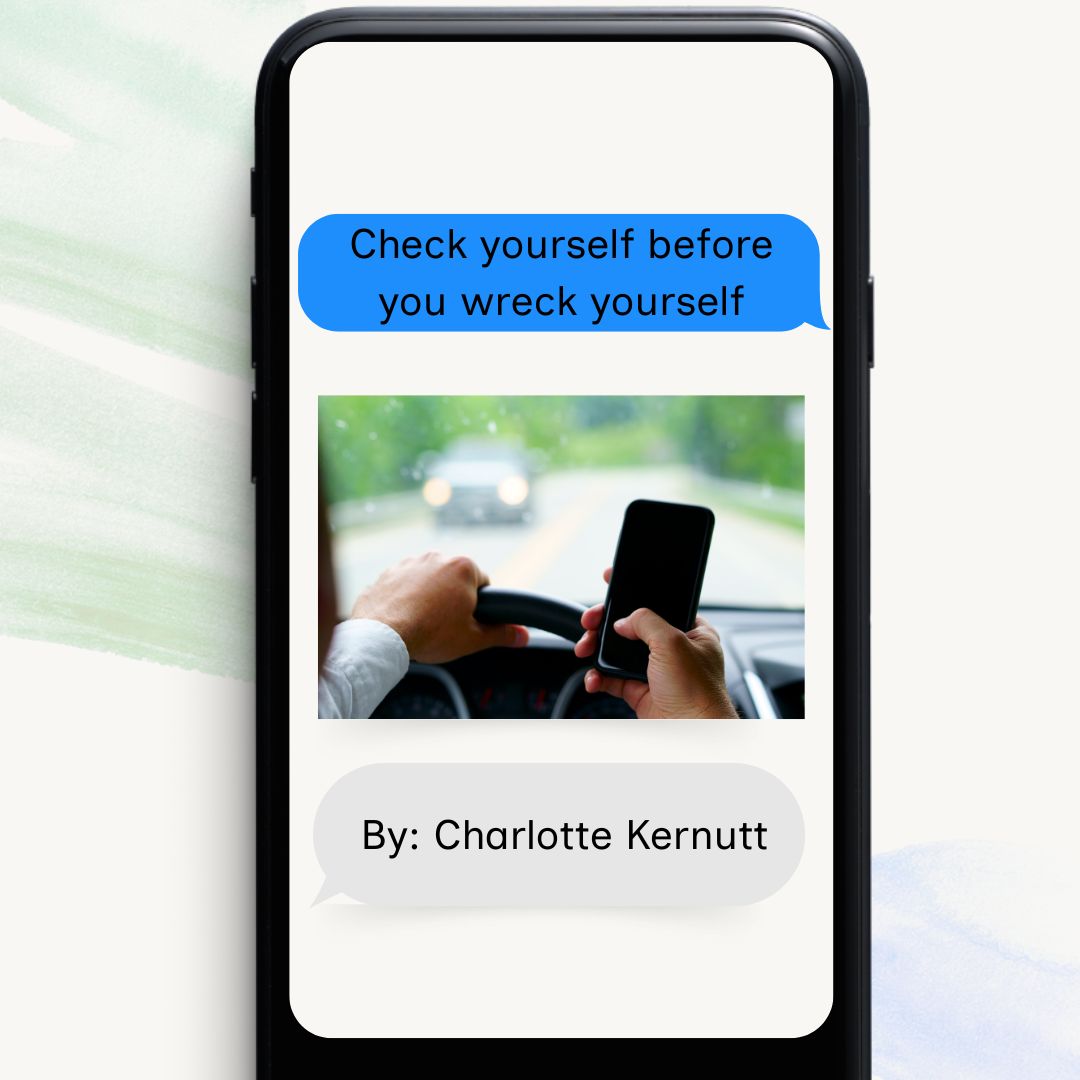There’s more to Duolingo than just its infamous green owl. The app offers over 40 language courses, including French, Spanish, and endangered languages like Navajo and Gaelic. As someone who’s been consistently using the app for over three years, I have developed my own opinions on its usefulness, functionality, and various features.
I can’t speak on all the language courses, of course, but I can go into depth on the Japanese-English courses and touch on my recently started French course. Not to mention, most features span over all the courses, so my review won’t be limited by how few I’ve taken. However, do note that I have been experiencing Duolingo’s paid version for two years, so my adless experience may be more positive than that of a free user.
I can say that Duolingo is a fairly useful resource for language learning, especially for being free. My goal when first using the app was to improve my Japanese so I could better speak with my Japanese mom and her side of the family. My speaking has improved a little, though I’m still not satisfied with my level, and I’ve come to be able to converse with my mom without having to ask her to repeat what she said in English all the time.
But the biggest thing that Duolingo helped me with was reading Japanese. Before I downloaded the app, I could barely read four characters out of the two basic 46-character phonetic alphabets, hiragana and katakana. And don’t even get me started on the third alphabet of over 40,000 Chinese characters called kanji, none of which I could read at the time.
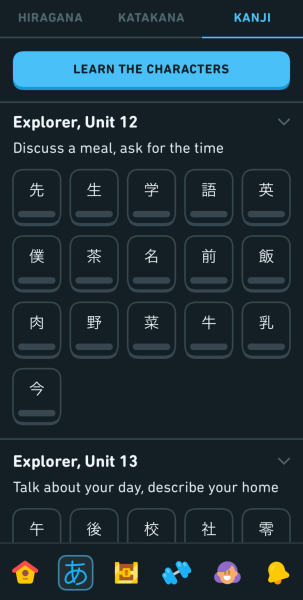
Thanks to Duolingo, I know how to read a lot more Japanese, including most of the ~2,000 jōyō (expected to know) kanji. I was elated the first time I was able to read my mom’s grocery list.
Now, that’s what Duolingo helped me with, but there are other aspects that Duolingo didn’t help with at all. Grammar, for instance, is Duolingo’s weak point. I was mostly fine when it came to the Japanese course since I was already familiar with the basics, but when there was something I didn’t understand, I would have to look for comments from more experienced learners or natives who explained the grammar better.
When it came to the French course, I experienced frustration with Duolingo’s grammar lessons, or lack thereof, when it taught me nothing before throwing me into lessons. With no more comments to turn to (they were removed in March 2022), I would have to learn through repeated mistakes and guesses.
Duolingo is useful when it comes to memorizing and learning new vocabulary, but I wouldn’t recommend it if you need to focus on grammar and want to become truly fluent in a language.
Onto functionality, I find that the app doesn’t have many errors or mistakes that impede learning, save for a few annoying ones. For example, the Japanese English course has an English phonetics section that allows Japanese speakers to learn and familiarize themselves with English phonetics. However, the section has six phonetic sounds that can’t be completed because of a bug, which really annoys the completionist in me.
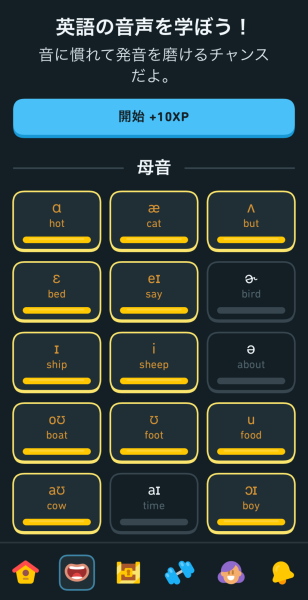
The Japanese course had errors in what could or couldn’t be accepted as a right answer. There were many times that I had to report a question for not accepting what should have been right (most were corrected). Being that the Japanese course had errors, it’s likely that other courses had or still have their own errors too.
However again, these errors were inconsequential enough to not impede a new learner’s progress, and a few errors are to be expected from any online language learning resource. So I would say that Duolingo’s amount of errors is acceptable.
Finally, I’ll delve into the many features Duolingo layered its app with. From fun new characters and their little animations to a gamification of lessons, the “features” I speak of range from design elements, and lesson contents, to functional aspects of the app, like Duolingo’s interactive stories that you translate and listen to as practice.
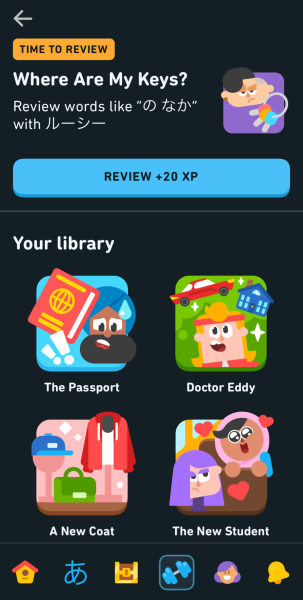
The app constantly updates with new or “revamped” features, to both my delight and dismay. There are times when I’m pleasantly surprised, like when a kanji practice section was added for the Japanese course. Other times I’ve been frustrated with what I thought were unneeded changes, like the color change of legendary (mastered) levels from purple to gold.
It would be too much to cover every single feature in the app, but I’ll cover some that I either love or greatly dislike.
I like Duolingo’s inclusiveness in incorporating LGBTQ+ friendly themes in their lessons. I also like the additions of a math and music course, interesting articles that may or may not be related to your language, the monthly challenges that award you with a badge, the streak freezes that act as a fallback when you miss a day, and the addition of optional furigana (phonetic characters next to kanji that show the kanji’s reading) for learners who have trouble with kanji. All these features have added positively to my experience with Duolingo.
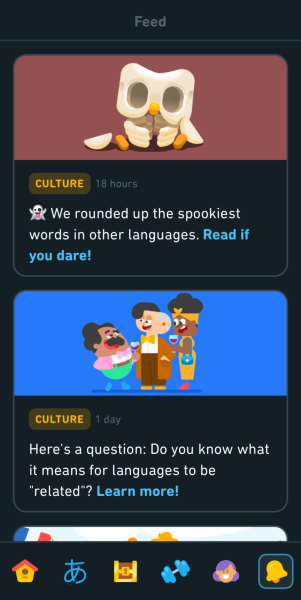
On the other hand, I dislike the competitive leaderboards that you can’t disable unless through a PC. I also dislike the mini-lessons to the side, especially 無限カルタ (mugen karuta)/ Match Madness, because they can be frustratingly difficult even for native speakers. Then there’s also how the mounting paywall blocks certain features for free users, how the alphabet/phonetics sections are randomized so you can’t choose what you want to practice, and the difficulty of earning gems (in-app currency). Some of these features have made me want to quit Duolingo.
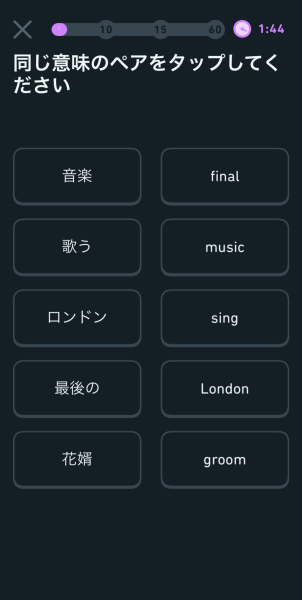
To say the least, I have as many gripes with Duolingo as I do praises, but what speaks for my overall thoughts shows how long I’ve stuck with it. My three years with Duolingo have proved fruitful, and I would definitely recommend it as a resource (alongside others) that people can use to learn the basics of a language. I give it ⅘ stars.
